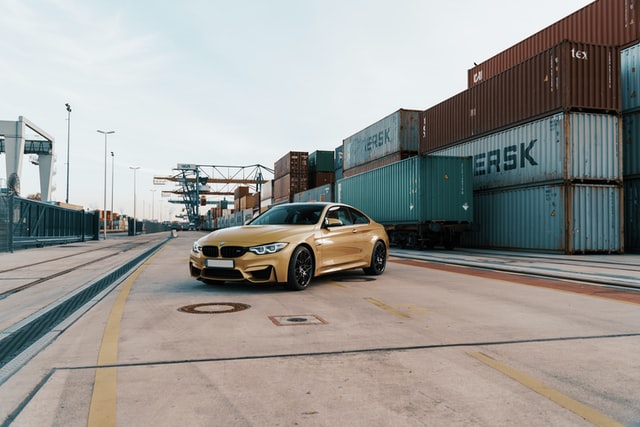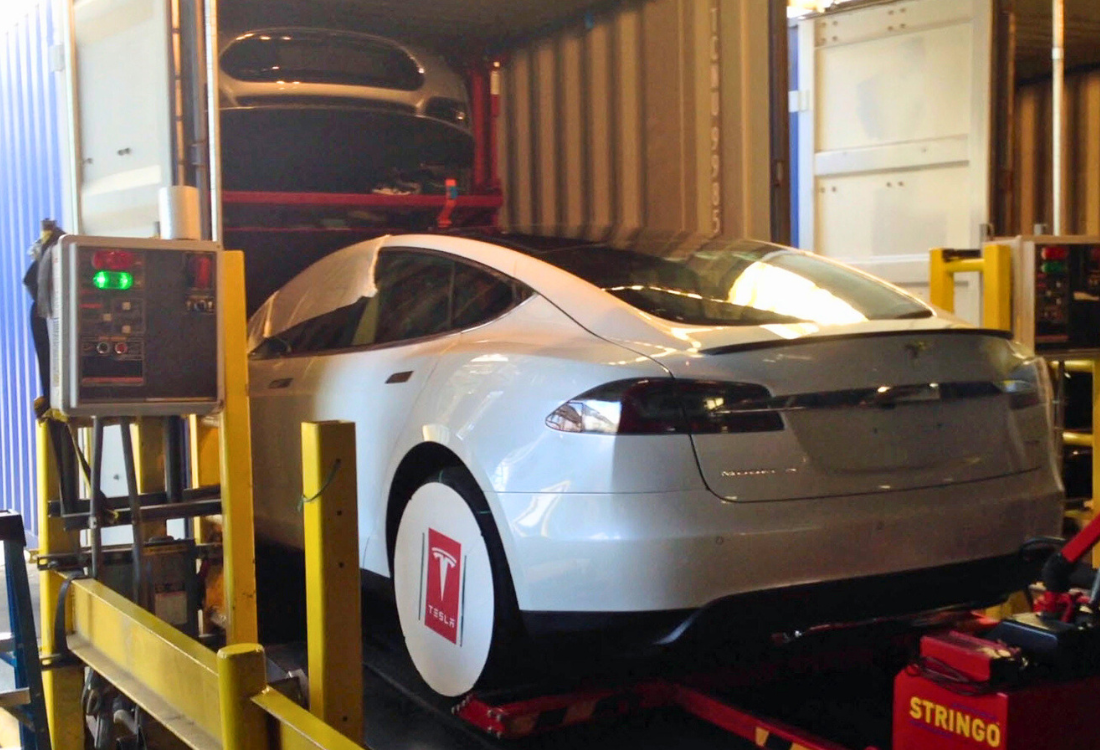
Compared with older methods, containerised car racking systems offer significant efficiency improvements for international vehicle transportation. Containers are versatile, allowing a greater range of port options. And with an effective racking system, up to six cars can be held in a 40ft container. But which type of racking system is best?

Car Racking Systems
Modern racking systems offer a fast, safe, and cost-effective alternative to RORO methods for storing and transporting vehicles to market in containers. Some logistics operators had been concerned about damage, high costs and vehicle limitations with containerised transport, usually based on the use of fragile and splinter-prone wooden racks. But with adjustable steel racking solutions, these fears can now be allayed.
Storage Numbers
One of the primary benefits of car racking systems is the more effective use of space. The R-RAK and EL-RAK systems from Trans-Rak allow up to four cars to be secured in a 40ft container, effectively doubling its storage capacity. Combined with the inherent stacking qualities of containers, this leads to a highly efficient storage solution for large-consignment vehicle transportation. Both solutions are versatile and able to support cars of all sizes and shapes. They are also adjustable to fit any standard shipping container, be it 20ft, 40ft, 45ft or 53ft.
Space Considerations
Both the R-RAK and EL-RAK maximise vehicle storage capacity, but operating space can sometimes be an issue. For ports with narrow loading bays, the EL-RAK's external loading capabilities may be more suitable. With the EL-RAK, cars are loaded into the rack outside the container. Manual vehicle handling is minimised, and the main loading process is carried out by forklift. This means little training is required and a full container may be loaded in under an hour.
Of course, both EL-RAK and R-RAK are reusable, with an operating lifespan of around ten years. When not in use, the racks can be returned to origin in collapsed form, providing cost savings for returns. In some cases, EL-RAKs for 105 vehicles can be stowed in a single container.
Equipment Considerations
EL-RAK is a good solution for vehicles that require external loading, such as electric cars, which may need to ship without batteries. It is also good for situations where human interaction with vehicles needs to be kept to a minimum, due to contamination risks or other handling issues. However, the EL-RAK does require forklift machinery and operators for loading and unloading. If such equipment is unavailable, a preferred option may still be the industry standard R-RAK, where racking is assembled within the container before cars are driven in.
For transporting wide vehicles, another option is the DL-RAK. This solution provides entirely driverless loading, where opening car doors or walking past the vehicle within the container would be risky or even impossible. Once cars are placed on the racks, the DL-RAK also requires forklift operation for container loading. As with the EL-RAK and R-RAK, DL-RAK is extensively reusable for around ten years. Up to 200 empty racks can be stowed in a single container for return journeys, leading to significant cost savings and reduced environmental damage.
Next Steps
For support choosing the right racking system for your consignment, please call our technical sales team today on +44 1926 40 82 82, or [click here] to claim a free copy of our Containerised Car Transport Guide.
Image source: Unsplash














